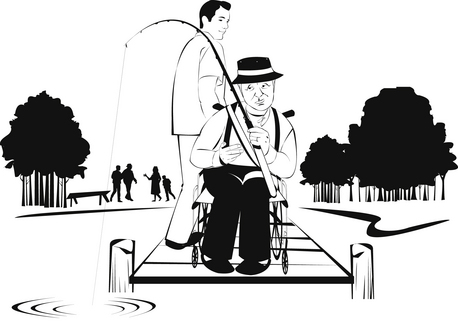Chapter 2 1 Describe the process of activity analysis. 2 Describe the process of activity configuration and activity synthesis. 3 Discuss the process of activity match. 4 Differentiate between occupation, activity, and tasks. 5 Compare and contrast a variety of activity analyses. 6 Discuss how Model of Human Occupation (MOHO) theory helps practitioners conduct activity analyses. 7 Identify a variety of therapeutic media and how they are used in practice. The practitioner examines the cognitive aspects of the activity and determines how things may need to be changed for success (Box 2-1). For example, the practitioner explores how the directions are relayed to the client. Practitioners also consider the psychosocial aspects to activities (Box 2-2). Understanding the client’s previous level of performance is important in determining the acceptable performance level for the activity. For example, if the client was a professional dancer prior to the injury, he or she may feel it is condescending to be asked to learn a few dance steps. Other clients may enjoy this activity as a way to reengage in leisure. The OT practitioner uses the process of activity analysis to explore all angles of the activity to be sure it is the right fit for the client. This process includes both the science and art of therapy. The science of therapy involves understanding the components and parts of activities, such as range of motion or movement required to perform. The art of therapy requires understanding how to deliver the directions, work with the client, and use one’s self therapeutically (see Chapter 4). Understanding the client’s story is the first step in designing effective intervention and conducting an activity analysis. This involves gathering information on the types of occupations in which the person has interest, routines, roles, family history, and medical history. Understanding the client’s desires and motivations (or what Kielhofner6 terms volition) is essential when designing individualized intervention. The occupational profile provides the first step in the activity analysis process. See Box 2-3 for sample questions that help to gain information for an occupational profile.1 After developing an understanding of the client through the occupational profile and an initial evaluation, the practitioner works with the client to define the goals and objectives for therapy. The goals and objectives may be specific to the setting in which the client is receiving intervention. Developing goals that are occupation-based ensures that the client will be invested in the outcomes.2,5,7,8 Consequently, practitioners are most effective when they develop occupation-based goals. The following questions may help practitioners develop these goals:
Activity Analysis
Overview of the Process of Activity Analysis
 Are there aspects of the activity that may be motorically difficult for the client?
Are there aspects of the activity that may be motorically difficult for the client?
 How does the person’s sight, hearing, and sensory processing influence the movement?
How does the person’s sight, hearing, and sensory processing influence the movement?
 Does the activity require endurance?
Does the activity require endurance?
 How long does the person need to stand or sit?
How long does the person need to stand or sit?
 Are there alternative ways to motorically perform the activity?
Are there alternative ways to motorically perform the activity?
 Are there multiple steps to the directions?
Are there multiple steps to the directions?
 Does this activity require a high or low degree of concentration?
Does this activity require a high or low degree of concentration?
 How much problem solving is required?
How much problem solving is required?
 What is the level of difficulty of the activity?
What is the level of difficulty of the activity?
 Can the directions be demonstrated?
Can the directions be demonstrated?
 What might interfere with the client’s ability to comprehend the activity demands?
What might interfere with the client’s ability to comprehend the activity demands?
Steps to Activity Analysis
 Understand the client’s story (occupational profile).
Understand the client’s story (occupational profile).
 Define the client’s goals and objectives.
Define the client’s goals and objectives.
 Describe the elements of the activity (activity configuration).
Describe the elements of the activity (activity configuration).
 Develop activities that match the client’s needs (activity synthesis).
Develop activities that match the client’s needs (activity synthesis).
Understand the Client’s Story: The Occupational Profile
Define the Client’s Goals and Objectives
![]()
Stay updated, free articles. Join our Telegram channel

Full access? Get Clinical Tree


Activity Analysis
Get Clinical Tree app for offline access








